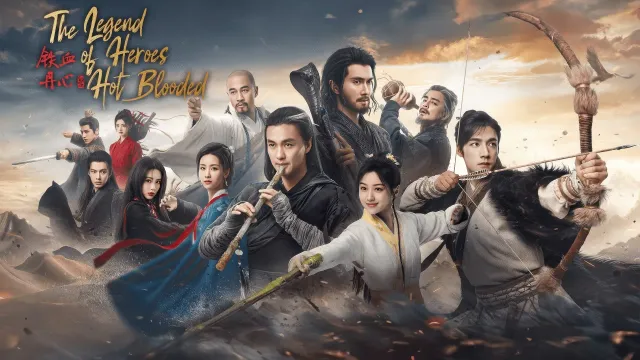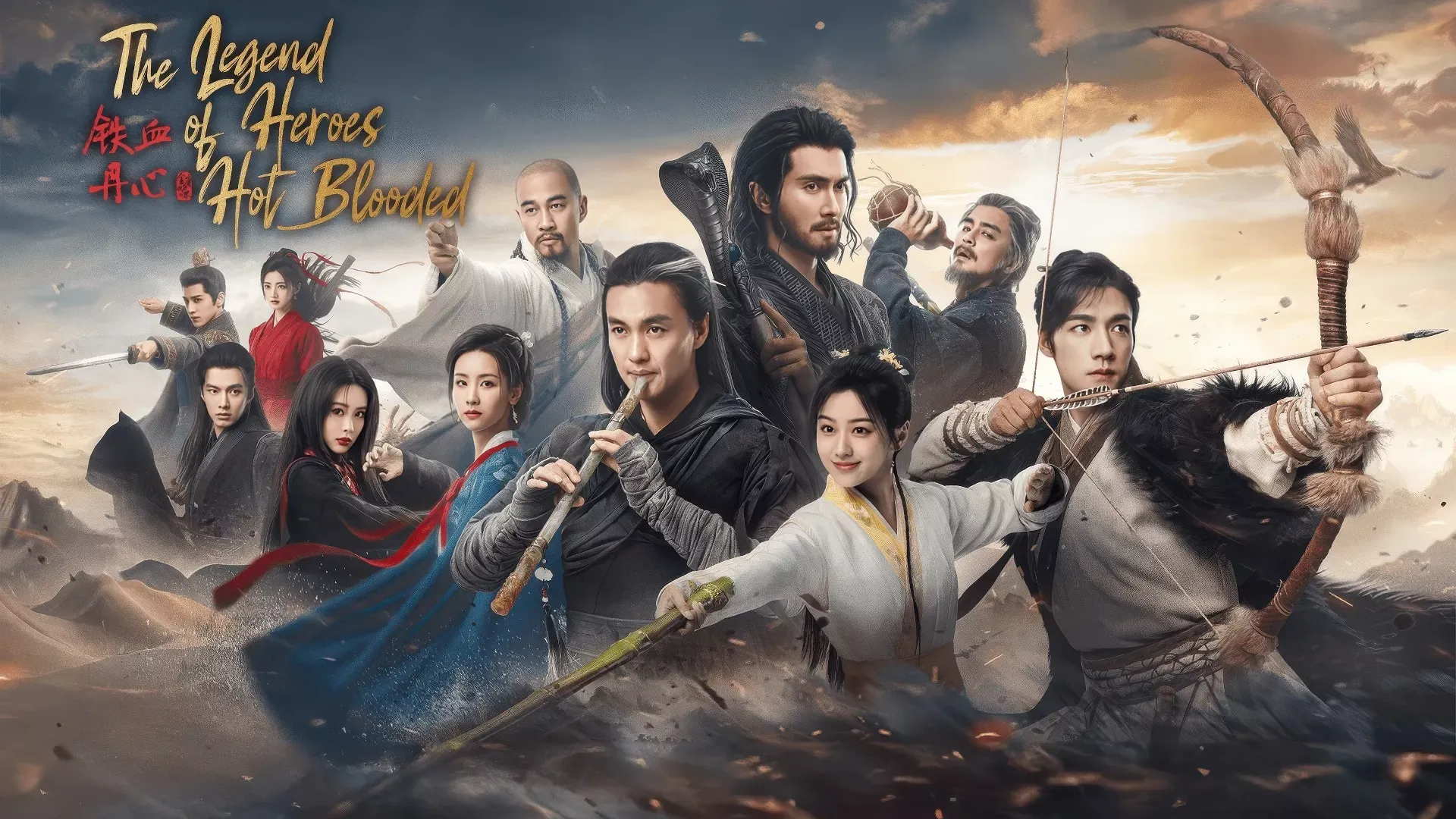Vermilion Zenith School (simplified: 仙霞派, traditional: 仙霞派, pinyin: Xiānxiá Pài) was a minor Buddhist-influenced martial arts school that operated as a branch of the Shaolin tradition. The school specialised in external martial arts and light-footed sword techniques, maintaining its headquarters at Yunqi Monastery near the Zhejiang-Fujian border region.
It represented the intersection of Buddhist monastic tradition and practical martial instruction, maintaining a modest presence while upholding Buddhist principles of compassion and discipline.
History
Foundation and early development
The origins of the Vermilion Zenith School traced back to the broader Shaolin martial tradition, establishing itself as a recognised branch specialising in external combat techniques. The school developed its distinctive approach by combining traditional Shaolin methods with regional fighting styles, adapting to the mountainous terrain around its base at Yunqi Monastery.
Role in regional affairs
Throughout its existence, the school maintained a relatively low profile in jianghu politics, focusing primarily on training monks and lay disciples in martial arts whilst fulfilling the monastery’s religious functions.
Connection to the Lu family
The school’s most notable external connection came through its relationship with the Lu family, particularly when Lu Guanying, son of Lu Chengfeng of Peach Blossom Island, became a disciple under Great Master Kumu. This connection brought the school into contact with the larger jianghu through Lu Chengfeng’s association with Huang Yaoshi, though the school itself remained relatively insulated from these higher-level machinations.
Organisation
Leadership structure
The Vermilion Zenith School operated under traditional monastic hierarchy, with the abbot of Yunqi Monastery serving as the school’s zhangmen.1 Great Master Kumu held this position during the Southern Song Dynasty, combining his responsibilities as monastery abbot with leadership of the martial school.
Membership requirements
The school accepted both monastic and lay disciples, though all students were expected to uphold Buddhist ethical principles regardless of their religious status. Candidates underwent evaluation of both their physical aptitude for martial training and their moral character, with the school prioritising students who demonstrated discipline and compassion over those seeking power or revenge.
Training methodology
Unlike schools that emphasised either pure internal cultivation or exclusively external techniques, the school developed a balanced approach that began with external martial arts foundation before introducing elements of Buddhist meditation and breathing exercises.
Martial arts abilities
Core techniques
The Vermilion Zenith School’s martial curriculum centred on external martial arts2 that emphasised practical combat effectiveness. Students learnt fundamental striking techniques, defensive postures, and basic weapon forms before advancing to more sophisticated applications.
Signature sword techniques
The school’s reputation rested primarily on its light-footed sword techniques, which combined swift footwork with precise blade work. These methods proved particularly effective in the mountainous terrain around Yunqi Monastery.
Relationship to Shaolin tradition
As a recognised branch of the Shaolin system, the Vermilion Zenith School maintained orthodox standards in its martial training whilst adapting techniques to local conditions. The school’s external focus complemented rather than contradicted Shaolin principles, providing students with practical skills whilst avoiding the more esoteric aspects of advanced internal cultivation that required decades of monastic dedication.
Philosophy
Buddhist foundations
The Vermilion Zenith School grounded its teaching in fundamental Buddhist principles, emphasising compassion, discipline, and the cultivation of wisdom alongside martial skill. Students learnt that martial arts served primarily as a means of protecting oneself and others rather than pursuing personal glory or dominance over opponents.
Ethical framework
The school’s ethical system required practitioners to use their skills responsibly, avoiding unnecessary violence and seeking peaceful resolution of conflicts whenever possible.
Balance of action and contemplation
Unlike purely martial schools that focused exclusively on combat effectiveness, the school sought to maintain balance between active training and contemplative practice.
Notable members
Great Master Kumu
Great Master Kumu served as both abbot of Yunqi Monastery and leader of the Vermilion Zenith School during the mid-Southern Song period. His background as a former military officer provided practical experience that enhanced the school’s martial curriculum, whilst his Buddhist ordination ensured adherence to the monastery’s religious mission.
Kumu’s family connections complicated his position when his nephew Duan Tiande sought refuge at the monastery after committing serious crimes. Despite his personal disapproval of Duan Tiande’s actions, Kumu’s obligations as both family member and monastery abbot created ethical tensions that illustrated the challenges faced by religious martial artists.
Lu Guanying
Lu Guanying represented the school’s connection to the broader jianghu through his father’s association with Peach Blossom Island. His training under Great Master Kumu provided him with solid martial foundations, though Huang Yaoshi later expressed dismissive opinions about the school’s limitations compared to more advanced systems.
Lu Guanying’s marriage to Cheng Yaojia connected the Vermilion Zenith School to the Quanzhen Order through family relationships, though these connections remained personal rather than institutional.
Great Master Jiamomu
Great Master Jiamomu[^jiamomu] served as another monastic member of the school, representing the typical Buddhist practitioner who combined religious devotion with martial training for practical purposes rather than pursuing advanced mastery.
Relationships
Alliance with orthodox schools
The Vermilion Zenith School maintained cordial relationships with other orthodox martial schools, sharing the common goal of upholding moral principles in the jianghu. However, its modest size and limited influence meant these relationships remained largely theoretical rather than involving active cooperation in major conflicts.
Connection to Shaolin
As a recognised branch of the Shaolin tradition, the school acknowledged the authority and superior martial knowledge of the main Shaolin monastery whilst maintaining operational independence in its daily affairs. This relationship provided legitimacy and access to traditional training methods whilst allowing adaptation to local circumstances.
Regional relationships
The school’s location at Yunqi Monastery positioned it within the broader network of Buddhist institutions in the region, though its martial focus distinguished it from purely religious communities.
Locations
Yunqi Monastery
Yunqi Monastery served as the primary headquarters for the Vermilion Zenith School, providing both religious and martial training facilities. The monastery’s location near West Lake in the mountainous terrain between Zhejiang and Fujian provinces offered natural defensive advantages whilst maintaining accessibility for students and visitors.
The monastery’s facilities included training courtyards, meditation halls, and residential quarters for both monastic and lay students.
Regional influence
Beyond its primary base, the school maintained limited influence in the surrounding region through former students who served as martial instructors or monastery guards.
Behind the scenes
Name translation
WuxiaSociety has chosen to use the translation of the Chinese name instead of leaving it untranslated as Xianxia School because of the potential confusion with the term xianxia. While 仙霞 (Xiānxía) in the faction’s name is a homophone of the xianxia genre, the xia is a different character that gives the compound term a very different meaning.
We try to capture this with “vermilion Zenith” to express the immortal rosy clouds seen in the mountains during sunrise and sunet.
Literary significance
The Vermilion Zenith School represents Jin Yong’s exploration of smaller martial organisations that operated alongside the major factions dominating jianghu politics.
Thematic role
The school’s modest status and limited capabilities serve as contrast to the supernatural abilities and profound knowledge of major characters like Huang Yaoshi and the Five Greats.
Cultural context
The portrayal of the Vermilion Zenith School reflects historical relationships between Buddhist institutions and martial arts training in Chinese society.
See also
- Jin Yong factions
- The Legend of the Condor Heroes factions
- Great Master Kumu – Respected abbot allied with the school’s principles
- Yunqi Monastery – Sacred Buddhist site near the school’s headquarters
- Quanzhen Order – Fellow religious faction with shared respect for spiritual cultivation
- Peach Blossom Island – Secular faction with unconventional practices
- Beggars’ Guild – Righteous faction in upholding justice in the jianghu
- Iron Palm Keep – Violent faction opposing the school’s peaceful ideals
Footnotes
-
掌门 – zhǎngmén. Literally gate controller. Head of a martial arts school or sect, responsible for leading the organisation and passing down its martial arts traditions to disciples. See Wuxia Wiki. ↩
-
外家 – wàijiā. External martial arts that emphasise physical strength, speed, and technique rather than qi cultivation. See Wuxia Wiki. ↩


